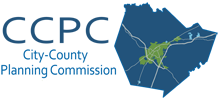Since the onset of the COVID-19 pandemic, government organizations, businesses, churches and educational institutions, among others, have been forced to come up with alternative mediums for meeting together. And it’s not just meetings that have changed. Many of us have had to rapidly adapt to working from home schedules and juggling multiple roles and responsibilities. This isn’t new news, as most of us have learned our new normal, for now. But has it worked? Will work, church, school, and social events be forever changed by the virtual world? That’s hard to say, but there are certainly lessons learned, and more to be learned as we all traverse the uncertain waters and future of this pandemic.
At our local level, we’ve adapted to continuing government affairs virtually. On the planning and zoning side, we have had (mostly) successes in holding virtual public hearings. It has taken time to adjust, for both staff and the public. We have certainly run into technical issues with the virtual meeting platform, network connections, and learning the ins and outs of screen sharing. Fortunately those errors have been minor and we have been able to accomplish our duties while adhering to prescribed processes for conducting business. Virtual meetings, or virtual teleconferences –the official state terminology – has been awkward, but have worked. Outside of Planning & Zoning hearings, the MPO, the agency responsible for transportation planning in our community, has continued to hold monthly committee meetings and has adapted to moving the public input process of several studies and plans to a virtual platform.
Like many others across the globe, we’ve been forced to be creative and seek ways to educate and engage the public in ways we would not have done so prior to this pandemic. For instance, we’ve embraced filming videos about upcoming changes, studies, and updated plans. We’ve compiled factsheets and other documentation to help the public and planning partners understand any changes and/or updates. This has been a helpful tool to aid in communication efforts.
While our virtual meetings and hearings are probably here to stay for the immediate future, we can glean some positive outcomes from this season of all things virtual. For one, it provides many folks who may not typically be able to travel downtown for meetings due to work or family obligations the opportunity to participate in the public process. We’re able to reach more people who might not have been able to participate in the face-to-face meetings. It also enables a more level arena for expressing concerns by removing some of the intimidation of standing in front of a crowd to share questions or concerns. The virtual chat boxes, hand raises, and open discussion have further opened the opportunity for the public to participate in new ways. On the opposite side, we do miss the face-to-face interactions for social reasons, but also for more effective, direct communication. We would also be remiss if we did not mention the limitations of many in the community with inadequate, or completely without, broadband internet necessary to reliably participate in meetings from home. Many are left to borrow internet signal from neighbors or businesses. Like most things in life with COVID, we are left to make due the best we can while community leaders continue to try and address this issue.
Moving forward, we aren’t sure what changes will be made long-term, but we are certainly challenged to consider more creative and hybrid ways of holding public meetings and hearings. We recognize the obstacles with internet accessibility, which also challenges us as a community to prioritize more wide-spread internet access across the county. In the weeks and months to come, we will continue to communicate changes and updates through our website, and also through our quarterly newsletters.

